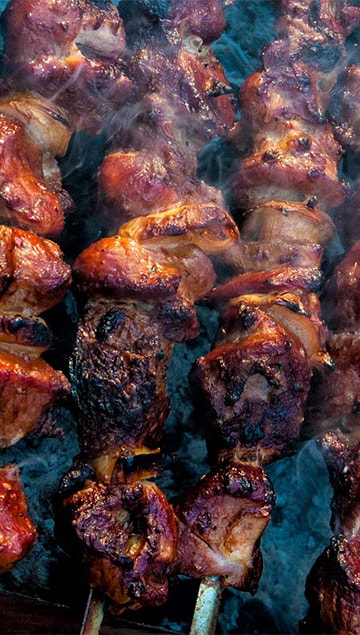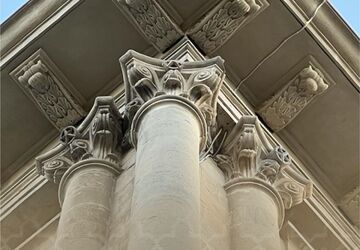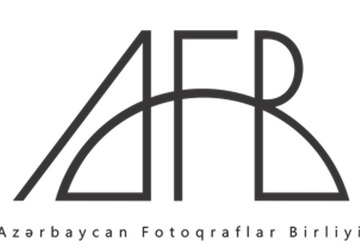Even in the first half of the VI century the Shirvanshahs’ State existed on the northeast part of Azerbaijan. But unfortunately in historical works the information about first Shirvanshahs is very scarce. The Shirvanshahs’ State played a huge role in the history of medieval Azerbaijan. The title “shah” of first Shirvanshahs indicates their partial independence. First times since its inception the Shirvanshahs’ Palace covers the area between the Caspian Sea and Gabala. Al-Masoudi, an Arab historian of the 10th century, wrote that the Shirvan country’s length extended month’s away. In connection with political events the territory of the state either reduced or expanded. Meanwhile approximately it had borders with Derbent (Derbent was part of the state as well) and Samur River in north, Ganja and Sheki in the west and the Caspian Sea in the east.
You are demonstrated the genealogy of Shirvanshahs had been ruled by dynasties. The Shirvanshahs’ State had been ruled by strong, powerful, the most educated rulers. For example, Faruburz, III Manouchehr, I Akhsitan, I Sheikh Ibrahim, I Khalilullah were eminent diplomats and statesmen. The period of their reign was the most flourishing period of Shirvanshahs.
According to the divan of Badr Shirvani, a courtier poet in the period of reign Shirvanshah I Ibrahim and Shirvanshah I Khalilullah, the powerful state had goldish flag.
Engelbert Kaempfer, who visited the palace in 1683 in his book written in Latin gave the graphical describtion of Baku. Graphical and written images of two lions and the head of the bull between them was the heraldic symbol of Shirvan state. The Shirvan toponym means “country of lions”, and shirvanshahlars called in sources “Siranshah” - lion of kings. Deity of the ancient Turks tribes was Tibetan Bull Yak. Thus lions embody is a symbol power and potency, head of the bull is a symbol of devotion to adherence turkey tradition. The locals considered lions the talisman, defender of the tower. The Shirvanshahs III Faruburz, Kavus, I Sheikh Ibrahim, I Khalilullah, Farrukh Yasar were skillful, courageous commanders, bravely defended independence of the state.
Land of Shirvan historically enjoys the favourable geographic position. All caravans ways going from China and India to Europe, from Russia to Arabian countries at that time passed through this area. Famous silk, values carpets, oil, salt, saffron, and other riches of Shirvan always were in sight, its productive lands turned into the place of rumble of foreigners. Territory of Azerbaijan during all its history was hostilities. Russian-Persian, Russian-ottomans wars had were conducted in the Azerbaijan, its territory underwent the destructions, the population was oppressed and persecuted. In VII century the area was conquered by the Arabs. In 1175 Shirvanshah I Akhsitan defeated in Baku bay Rus' navy attacked on 73 boats to Baku, returned back captured Khazarian Derbent and Shabran. That period of time Baku was of a particular importance as a seaport. In short, at the Middle Ages which were the most arduous, difficult, time of history illustrious Shirvanshahs dynasty had been ruling the powerful state with thousand year history.
Land of Shirvan is famous for its beautiful and ancient carpets reflective of the history of the Azerbaijan people. Carpet patterns of Shirvan are demonstrated in many museums of the world and the most famous collections. Centuries ago the floors and walls of the Shirvanshahs palace were decorated carpets and “giaba” with exceptional beauty which continued to amaze everyone. Special “Dast khali-giaba” intended for spacious rooms in palaces, and which were in great demand both in the houses of beks, khans and the rich. The set were consisting of three-five carpets: central, two side pieces or bedside, capital and rug carpet. Other rugs you can see are “Yollug” and “Bijo”. In spite of the name “Bijo” is related with the village of the same name, nowadays in the administrative territory of Aghsu district of Shirvan, they are considered the most famous rugs in all Caucasia. The difficult elements of folk ornaments make visitors think.











